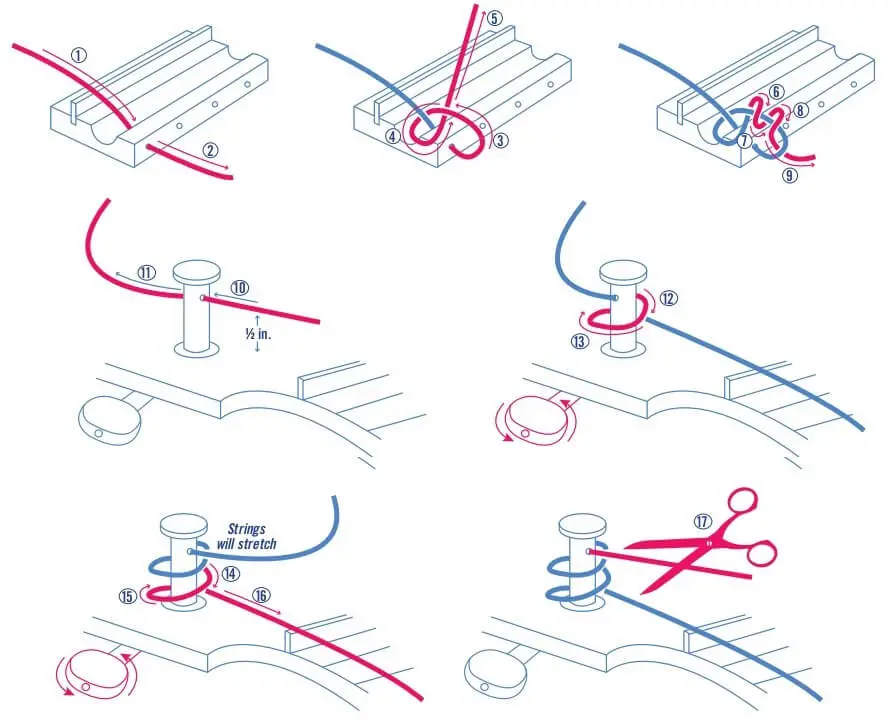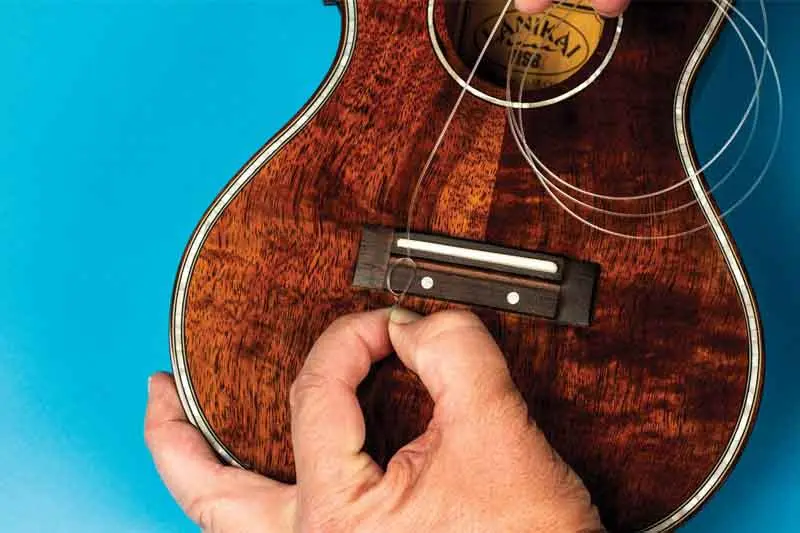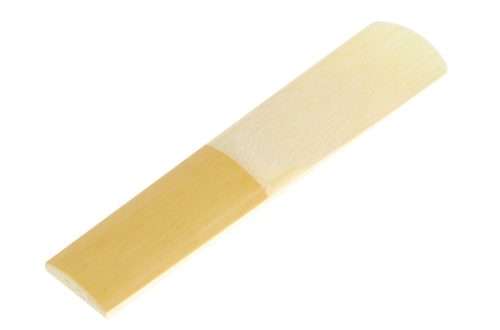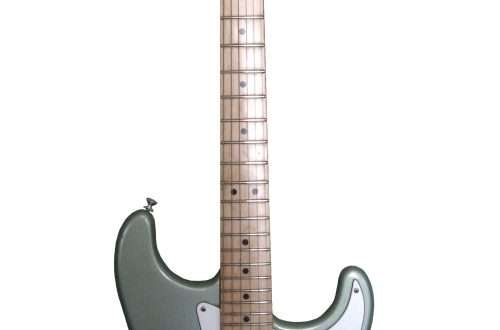
How to change strings on a ukulele
The ukulele has thicker strings than the classical guitar. But they also wear out, sound dull and deaf, and begin to tear.
Replacing strings is also necessary when deciding how to properly make a ukulele out of a guitar.
How to change strings
The process of changing strings on a Hawaiian instrument is identical to that on a classical instrument.
What will be required
To thread new strings, you should remove the old ones by unscrewing the pegs , clean the neck , under which dust and dirt accumulate. When the strings take their places, it is problematic to do so. This step is important because the rubbing of the new strings against dirt particles wears them out.
Experienced musicians apply a simple pencil to the holes of the bridge before installing new strings. This helps them lie softly.
Step-by-step instruction
To replace ukulele strings with your own hands, the following steps are necessary:
- The string is threaded into the tailpiece .
- It is stretched 12-15 cm.
- A tip is passed into the resulting ring, which forms a bridge around and a knot – it does not need to be tightened.
- The tip is wrapped around the loop twice, then tightened. For reliability, it is worth making three turns. If there are more of them, it’s not scary.
- The ukulele string is threaded on the head of the neck .
- She is pulled with a peg. To speed up the winding of the strings, it is recommended to use a special winding device.
- Remove excess string ends with wire cutters or scissors.

Rookie Mistakes
Beginning players find that new strings, especially those made from nylon, sound strange, so they think they have not installed them correctly on the instrument. In fact, the strings need a little time to stretch and come to a normal working condition. The tuning is spreading, so every 2-3 days the ukulele needs to be adjusted, as the strings stretch.

If a beginner is in doubt about how to make a ukulele out of a guitar, the following rules must be considered:
- The string must be inside the peg cylinder.
- First, the 1st and 4th strings change, and then the other two.
- It is good if the string coils are located below the peg hole – thanks to this, the correct tension can be achieved.
- The optimal number of turns is 2-4.





